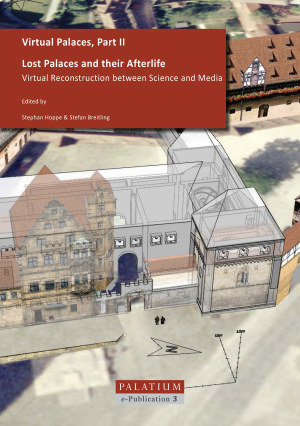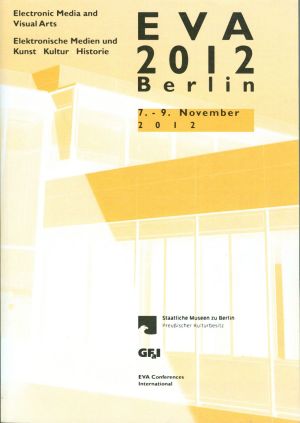Breitling, Stefan
Virtual Palaces, Part II: Lost Palaces and their Afterlife. Virtual Reconstruction between Science and Media
Der Band befasst sich mit der digitalen Rekonstruktion und Visualisierung von Schlössern, Burgen und Residenzarchitektur der Frühen Neuzeit. Das Hauptaugenmerk liegt dabei weniger darauf, digitale Modelle von noch bestehenden Gebäuden zu erstellen als vielmehr auf der virtuellen Rekonstruktion „verlorener“ Bauten, besonders bezogen auf Schlösser, die zerstört, stark umgebaut oder auch nie errichtet wurden.
Die 13 Aufsätze des Bandes wurden zuerst anlässlich des Palatium Workshops "Virtual Palaces, Part II" präsentiert, der im April 2012 in München stattfand.
The Interior as an Embodiment of Power: The Image of the Princely Patron and its Spatial Setting (1400-1700)
This volume is dedicated to the study of the in- and outside of princely residences and of their setup as the stage for a developing European early modern court culture. At a time of increasing aristocratization (1400-1700) and with many new nascent princely courts, both the princely person and the performance of princely power required an appropriate type of elaborate backdrop as its setting. Even though such an interest in the palace interior and its functions is not entirely new, interior architecture and court culture have only recently come to be seen as two sides of the same medal: embodiment and expression of the princely presence.
Therefore, the essays included focus in particular on diverse types of functions that palaces and apartments, state rooms and privy chambers had to fulfil at certain periods and in certain residential contexts between the ages of feudalism and absolutism at courts in London, Edinburgh, Neuburg am Inn, Karlstein and Prague, Červený Kameň and Ludwigsburg. They compare and contrast specific local examples with international trends such as, for example, the palace and court ceremonial developed at or adapted to diverse circumstances in Burgundy, Spain or Lithuania. Consequently, the aim of this volume consists of the combination of personal and dynastic ambitions with fashionable trends and court etiquette followed by royalty and minor princes alike during a period of calculated magnificence. It considers processional routes towards the presence of the ruler or towards its image. Thereby, it helps to define the complementary roles of residential interiors and of the courtly personnel at the same time.
The ten papers collected in this volume were first presented at the PALATIUM colloquium The Interior as an Embodiment of Power―The Image of the Prince and its Spatial Setting (1400–1700), organized by Stephan Hoppe, Krista De Jonge and Stefan Breitling and held in Bamberg in October 2013.









